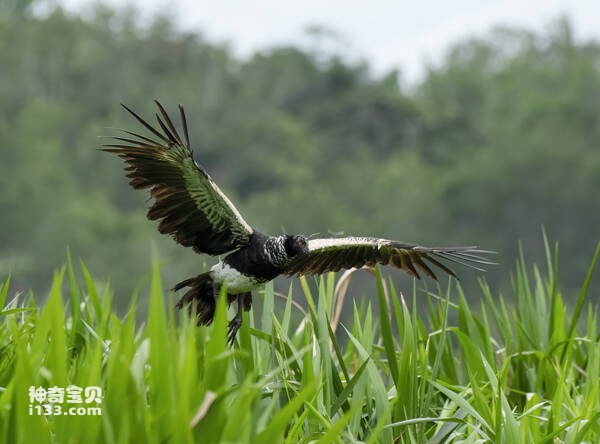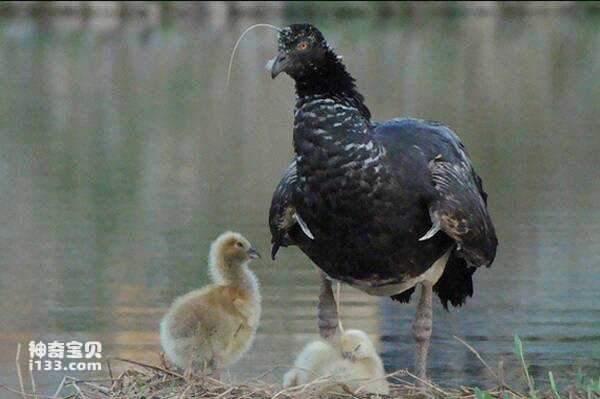Anhima cornuta
IUCN
LCBasic Information
Scientific classification
- name:Anhima cornuta
- Scientific Name:Anhima cornuta,Horned Screamer
- Outline:Waterfowl
- Family:
Vital signs
- length:84-99cm
- Weight:3-3.15kg
- lifetime:15 years or so
Feature
It gets its name from the high-pitched call it makes when flying or walking
Distribution and Habitat
It is distributed in Bolivia, Brazil, Colombia, Ecuador, French Guiana, Guyana, Paraguay, Peru, Suriname, Venezuela, Bolivarian Republic.
Possible extinction: Trinidad and Tobago.
The top of a shrub perched near a pond. It occurs frequently in tropical rainforests, swamps, and grasslands near rivers. These birds are endemic to South America. With a large distribution stretching from Colombia to the Andes mountains of northern Argentina, this species is mainly found at lower elevations, although it can reach heights of up to 1000 m in Colombia's Cauca Valley.
Appearance
The horned duck is the largest kind of duck, with a body length of 84-99 cm, a wingspan of 170 cm, a weight of 3000-3150 grams, and a life span of 15 years. He swims like a goose. It has a short, slightly curved beak, powerful legs, and sunken claws. The horned duck looks very large and its head is small compared to its body size. The long black feathers form a fluttering horn feather on the top of the head. The body feathers are mainly black and green. White spots on top of head and neck. Large silvery spots cover the whole broad shoulder, especially in flight. The lower body, abdomen and legs are pure white. Legs lead with green. Young birds have dimmer feathers than adults, with shorter "horn feathers" at the front.
The internal structure of the duck is like that of antheriformes, but the appearance looks very different from other antheriformes birds, its beak is like a chicken's beak, with micro-webbing between the toes and a sharp distance on the wings.
Details
The Horned duck (Anhima cornuta) is known as Horned Screamer and has no subspecies.

In dangerous situations, the horned duck can fly quickly to the top of the tree in the house. They are resident birds and only make short flights. Mainly vegetarian, eating leaves, stems, flowers and plants, generally eating the softest part of the roots. They also eat insects and grass in the same way that geese do. The horned duck is a noisy bird that can be heard at a distance of up to 3 kilometers. The call was transcribed as follows: "quuk-quoo, quuk-quoo, Yoik, Yoik. It is characterized by a guttural sound.

The horned duck breeds all year round. It occurs mainly in the spring and summer, and is located in the southernmost part of South America, where the egg-laying season is from November to December. Fiercely defending their territory during the breeding season. Accumulation of nesting plant material and refuse. It is found in shallow water and in grass on the shore. Three to five brown eggs are laid at a time, and co-incubation between the parents lasts about 40 to 47 days. The chicks are born with a yellow-gray downy coat, and their feathers are fully fledged after 8 to 10 weeks, but they are fully independent after a month.
Listed on the International Union for Conservation of Nature (IUCN) 2012 Red List of Threatened Species ver 3.1 - Low Risk (LC).
Protect wild animals and eliminate wild meat.
Maintaining ecological balance is everyone's responsibility!
The Horned duck (Anhima cornuta) is known as Horned Screamer and has no subspecies.

In dangerous situations, the horned duck can fly quickly to the top of the tree in the house. They are resident birds and only make short flights. Mainly vegetarian, eating leaves, stems, flowers and plants, generally eating the softest part of the roots. They also eat insects and grass in the same way that geese do. The horned duck is a noisy bird that can be heard at a distance of up to 3 kilometers. The call was transcribed as follows: "quuk-quoo, quuk-quoo, Yoik, Yoik. It is characterized by a guttural sound.

The horned duck breeds all year round. It occurs mainly in the spring and summer, and is located in the southernmost part of South America, where the egg-laying season is from November to December. Fiercely defending their territory during the breeding season. Accumulation of nesting plant material and refuse. It is found in shallow water and in grass on the shore. Three to five brown eggs are laid at a time, and co-incubation between the parents lasts about 40 to 47 days. The chicks are born with a yellow-gray downy coat, and their feathers are fully fledged after 8 to 10 weeks, but they are fully independent after a month.
Listed on the International Union for Conservation of Nature (IUCN) 2012 Red List of Threatened Species ver 3.1 - Low Risk (LC).
Protect wild animals and eliminate wild meat.
Maintaining ecological balance is everyone's responsibility!








